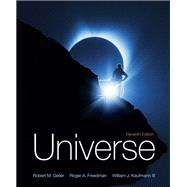Discovering the Universe, 11e is now supported in Achieve, Macmillan’s new online learning platform. Achieve is the culmination of years of development work put toward creating the most powerful online learning tool for Astronomy students. It houses all of our renowned assessments, multimedia assets, e-books, and instructor resources in a powerful new platform.
Universe by Robert M. Geller and Roger Freedman strikes the right balance between scientific rigor, student comprehension, and excitement. Available as the full 27-chapter text or split into Stars and Galaxies and The Solar System, Universe provides all the detail you need to prepare students for engaging with astronomical ideas and theories, while also inviting students to explore through stunning visuals and relatable narratives.









